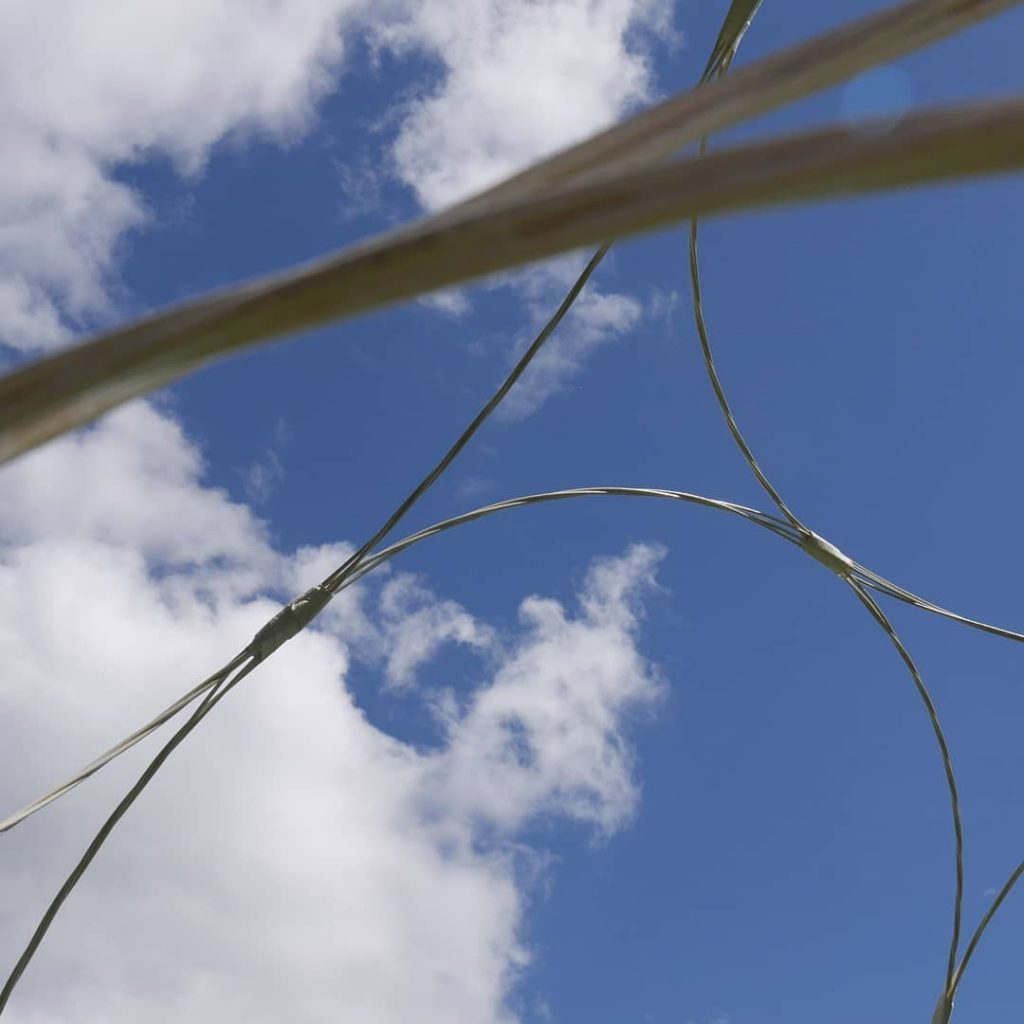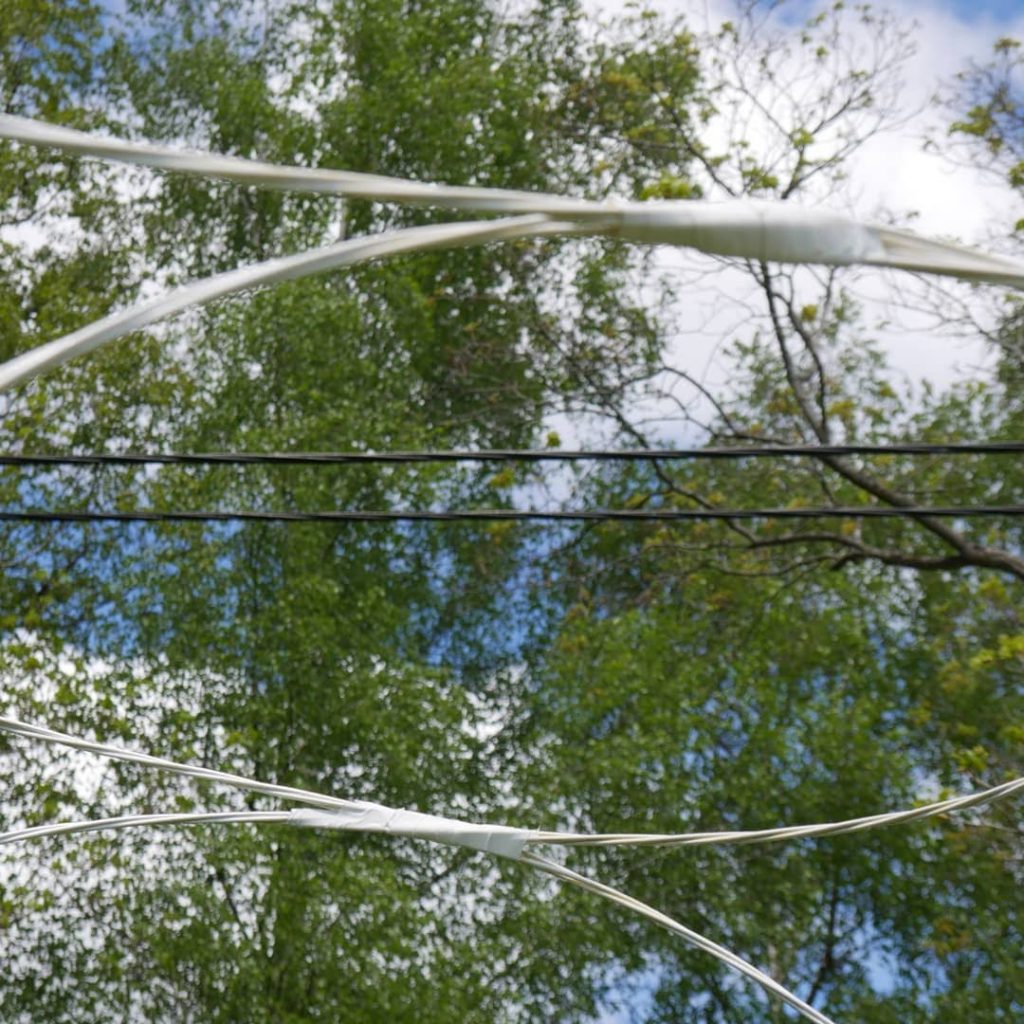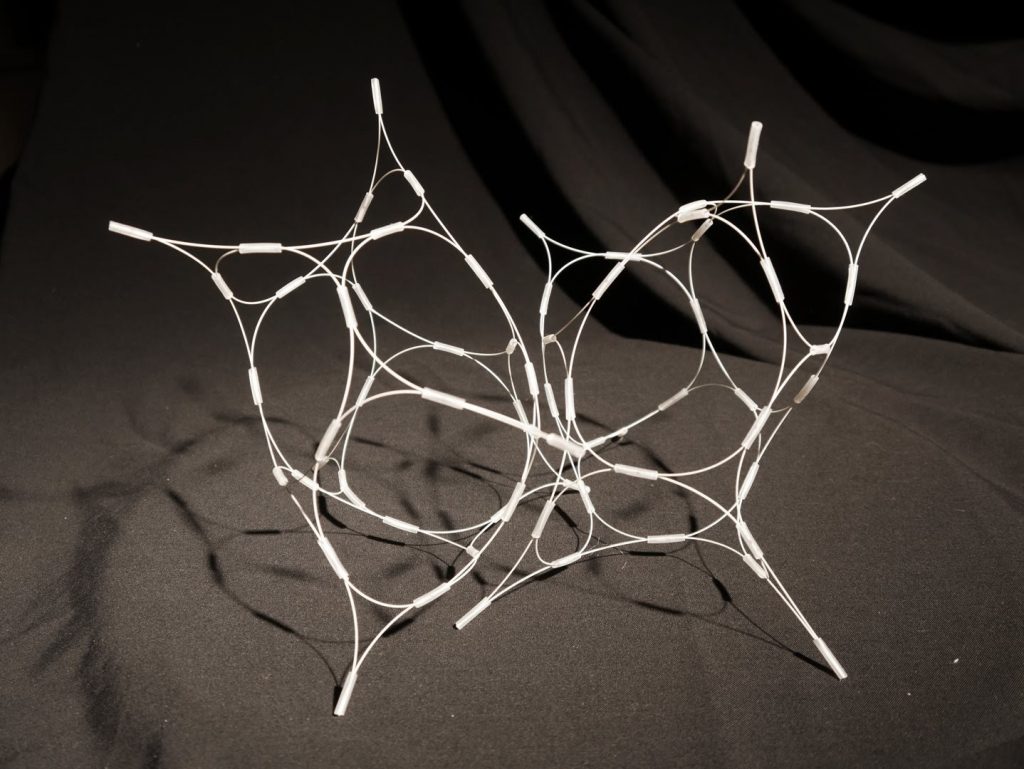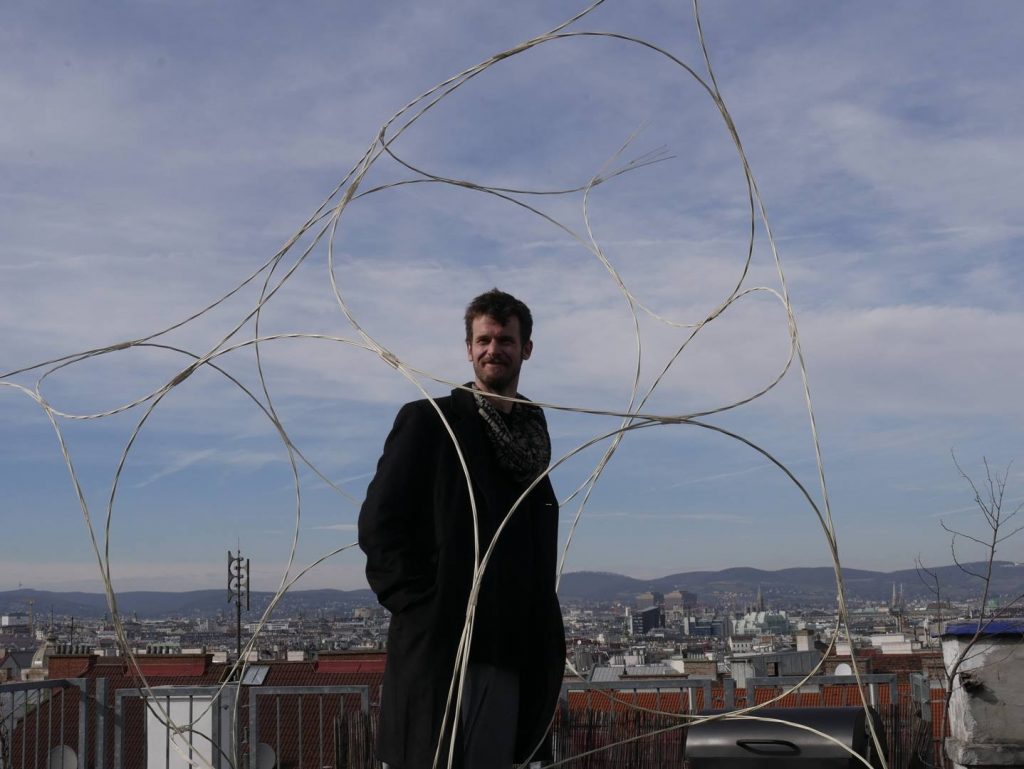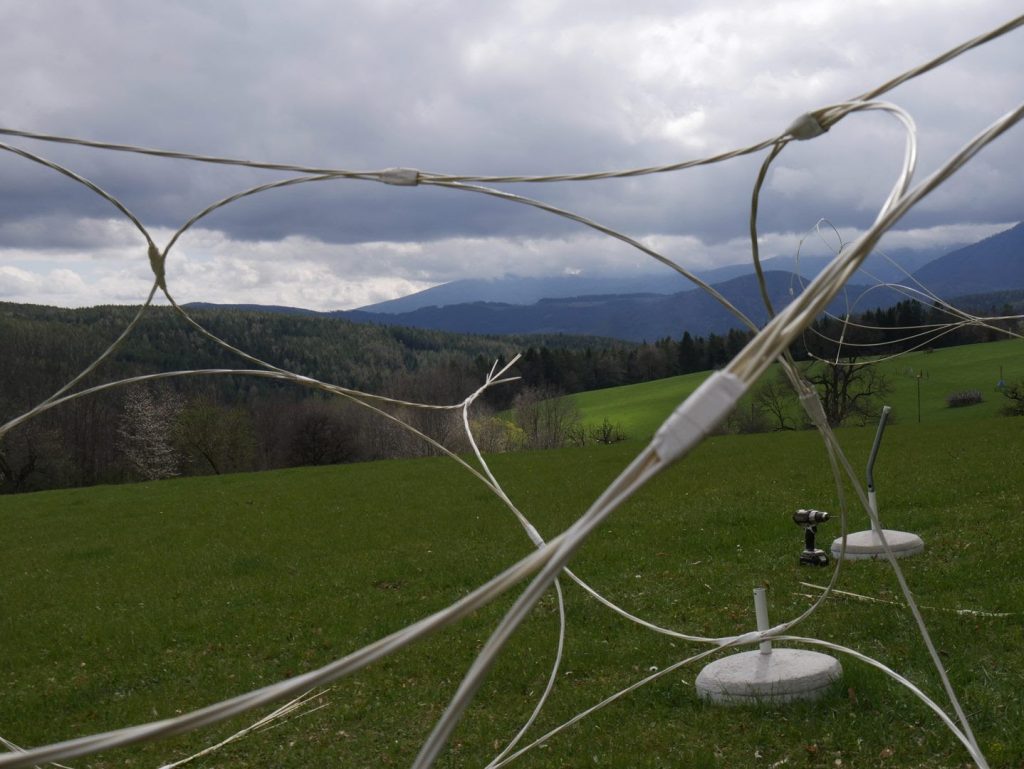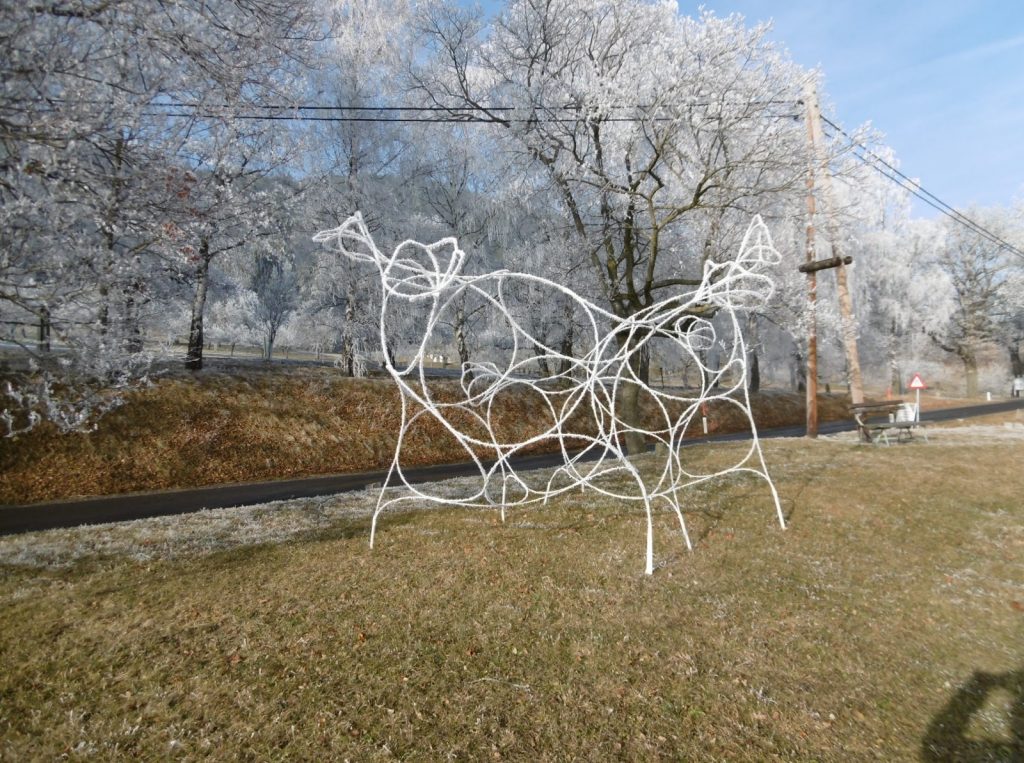“Spannungsfelder” (2019)
Kunst in der Landschaft XII
Gut Gasteil, Prigglitz (A)
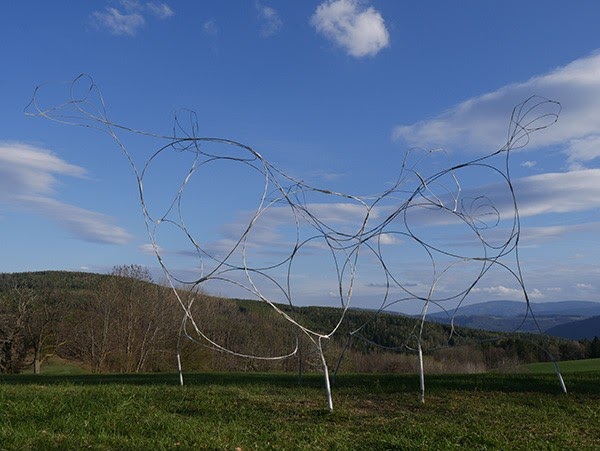
The object is a walk-in double sculpture formed from elastic fiber-reinforced strings. Firmly anchored in the earth, but very mobile in its construction, it explicitly invites the viewer to enter. When he enters the interior of the construction, the view changes and he becomes a participant.
Pieces of the environment can be perceived fragmented by the round-shaped spaces between the flexible cables. At the same time, through their limitation, they lift the respective fragment out of the totality of the view. In the eye of the viewer, the image separates itself out of the landscape. As an actor he influences this section and this image through his change of location to create it again and again.
Gut Gasteil
Situated in the wider countryside, this gentle slope on the eastern flank of the austrian alps is, regarding its exposure, located at a very significant position of this landscape.
Due to easy accessibility from the large basin, various valleys and wide mountainous regions, alongside significant visual axes providing insights to several directions, the site has been of cultural importance throughout its long history of human settlement.
Accordingly, after being a cult site from prehistoric to early christian times, it also repeatedly served as a camping ground for troops of the Ottman Empire in periods of the Turkish sieges of Vienna.
During the past decades, Charlotte and Johannes Seidl invited a large number of international artists to engage with the area and established the site as an important outdoor exhibition space with numerous objects of contemporary landscape art.
Topological Response
Among the many lasting impressions of the initial visit of the site, the spatial perception based on its vast field of vision happened to be the most significant.
Linking the area’s natural characteristics with its cultural background, the sight’s continuously curved horizontal line provided a suitable starting point for a sculptural response.
The exposure creates a sense of comfort, of being within an intermediary layer, between above and below, neither trapped nor unpleasantly exposed.
As a consequence, exceeding this comfort zone led to a fundamental eversion of the established framework of perceiving one’s surroundings.
On a topological level, this project manipulates our understanding of space by opening the horizon-based reference frame and reshaping the centralized conception of our perspective.
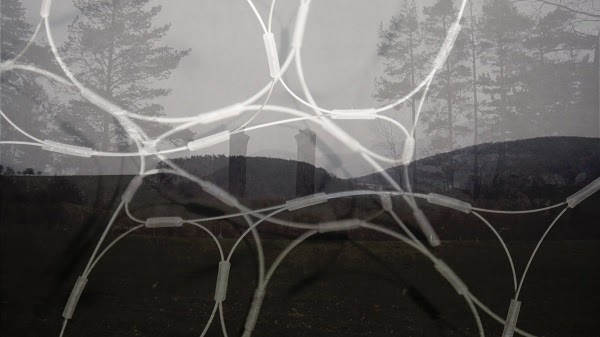

Along these lines, the two hemispheres of vision which are separated by the horizon are being everted and closed towards the opposite direction of their curvature.
The outer vault becomes the shell of two independent spaces. After being inside a single sphere, the former center is now outside of this couple. Where are we? Where did the horizon go?
While some consequences of this manipulation can hardly be understood, certain aspects can be physically experienced through entering its sculptural manifestation.
By stepping through the spatial enclosure and looking through this shell from the opposite side, our perspective is being reframed.
Thereby, while also providing new views of the landscape, visitors are encouraged to step beyond their boundaries of conception.


